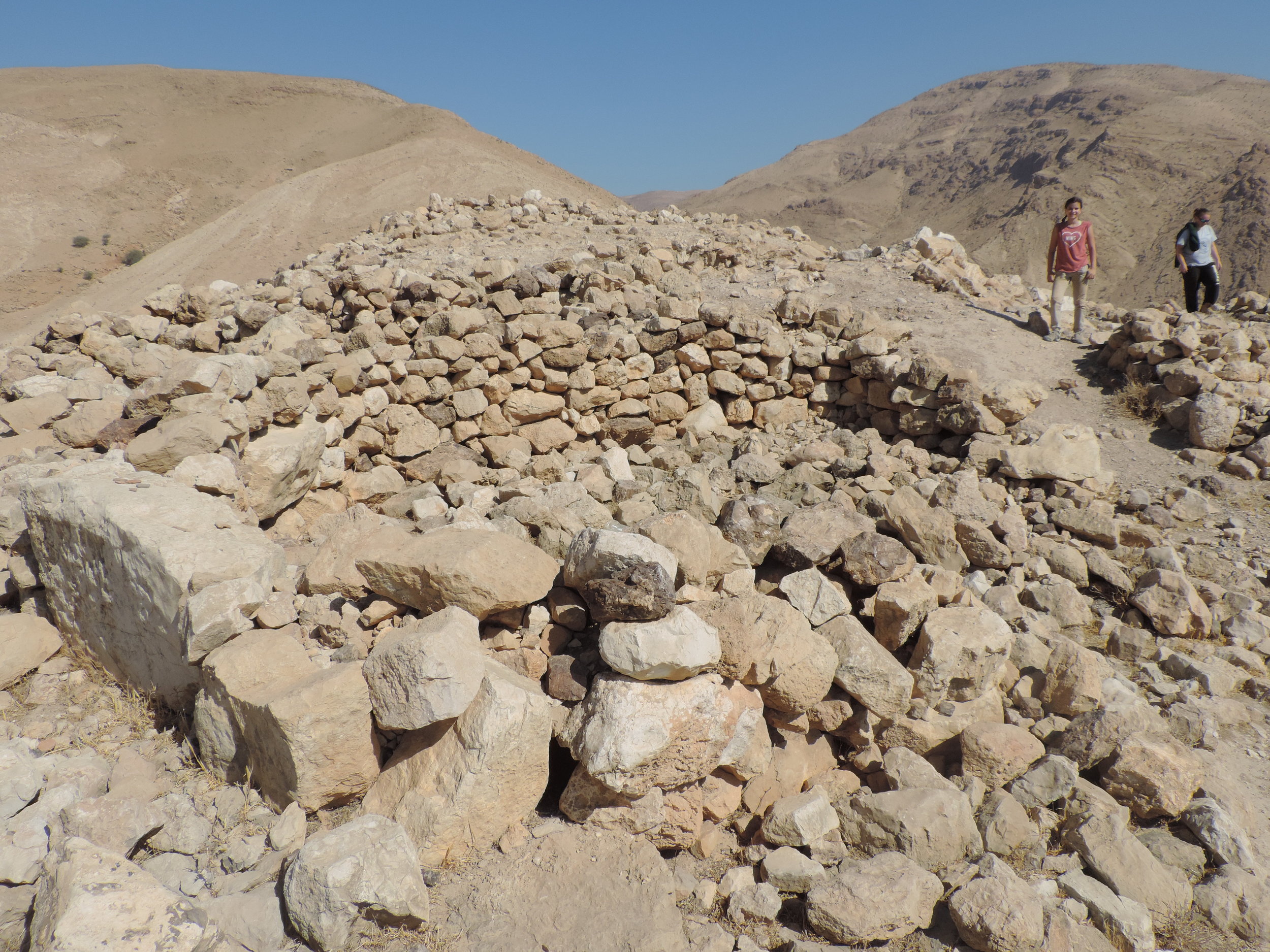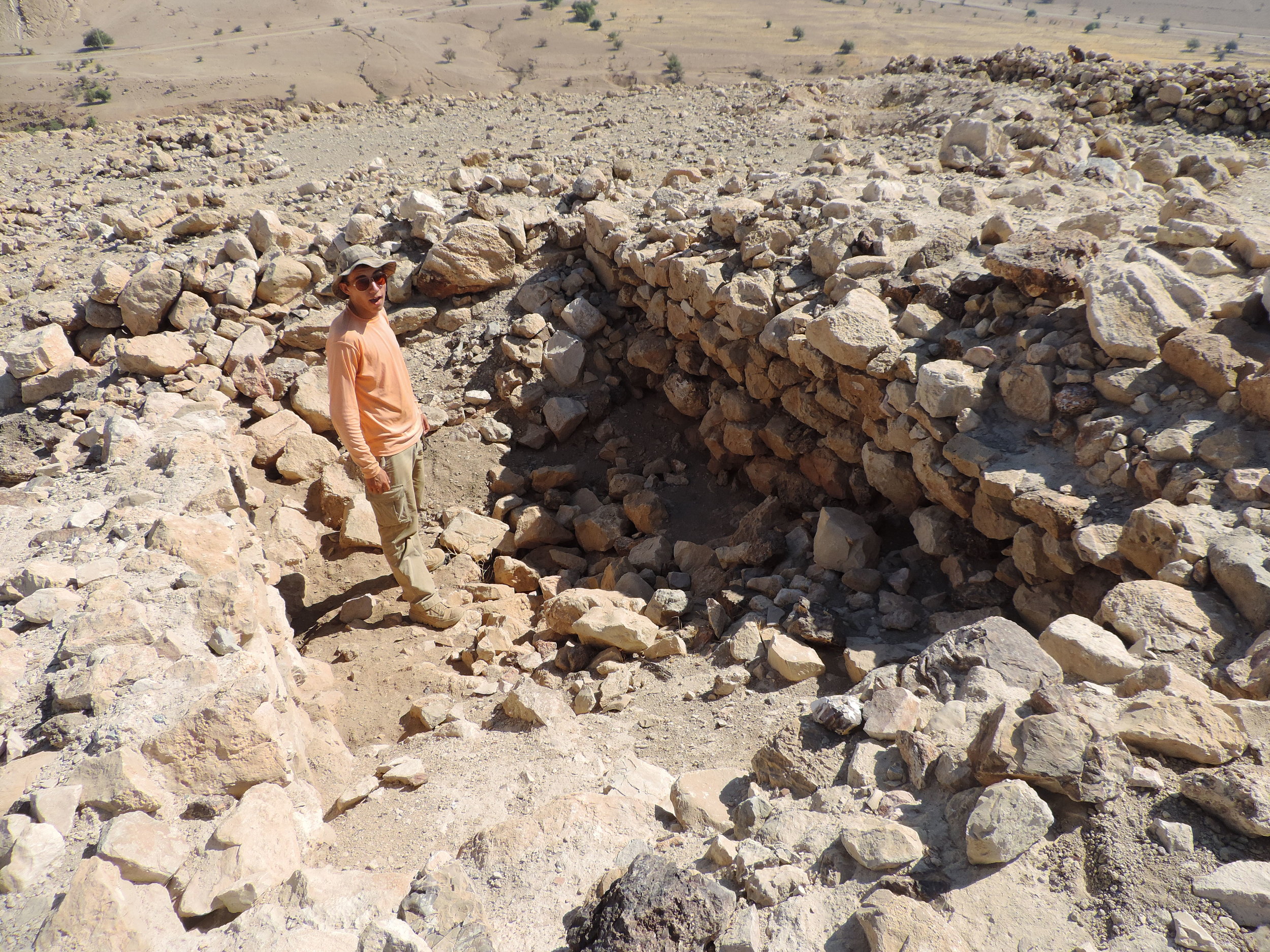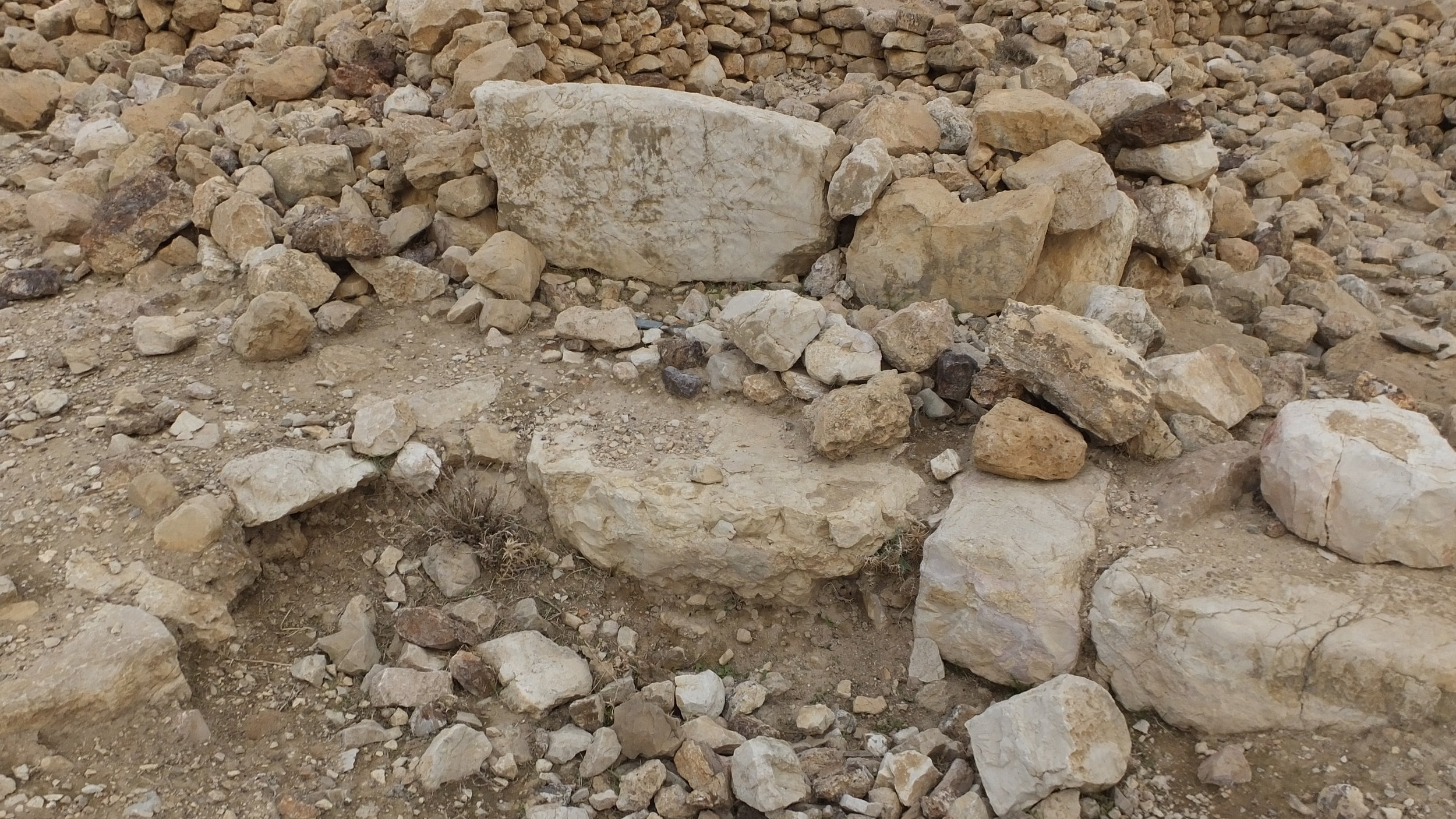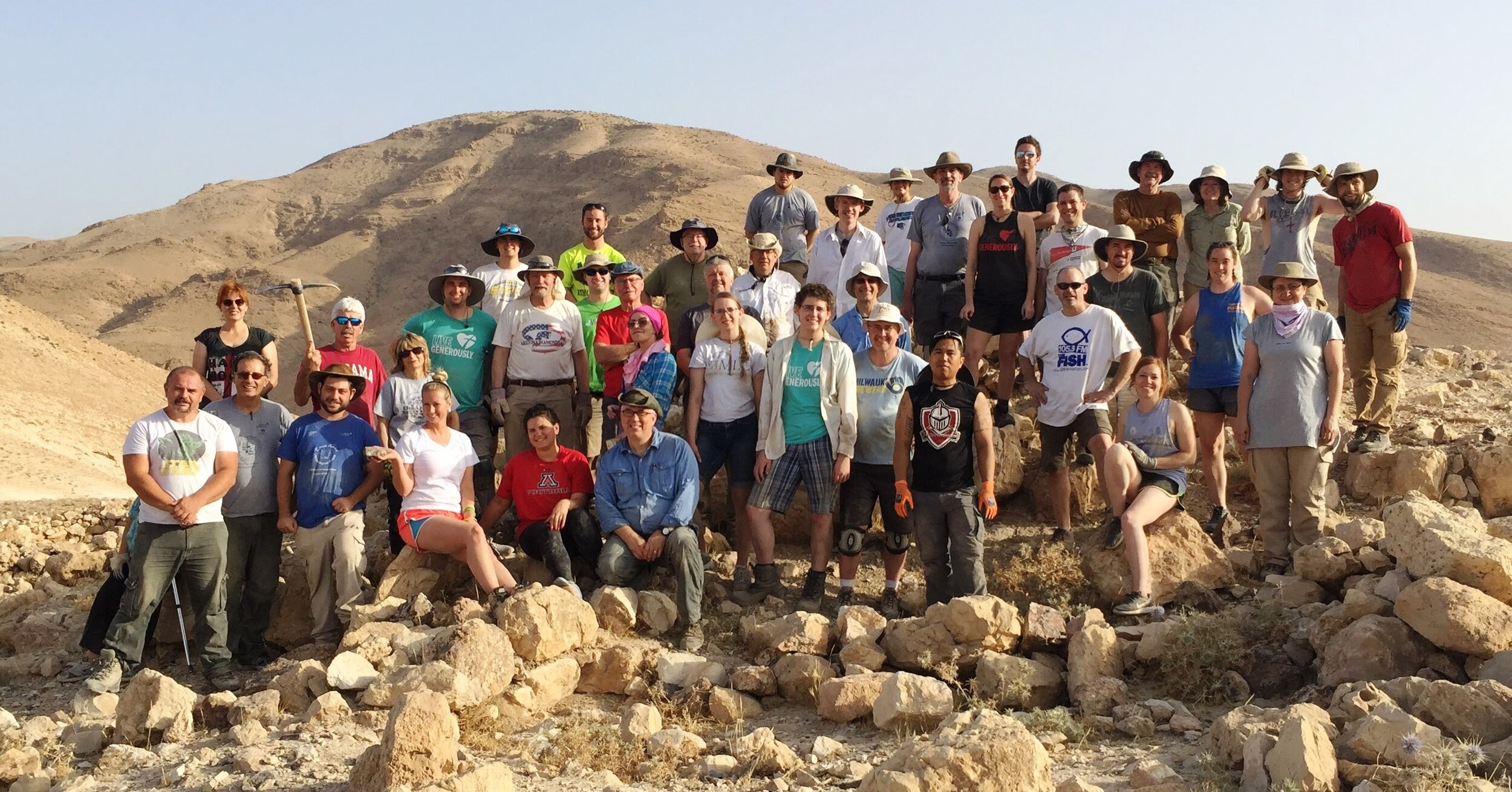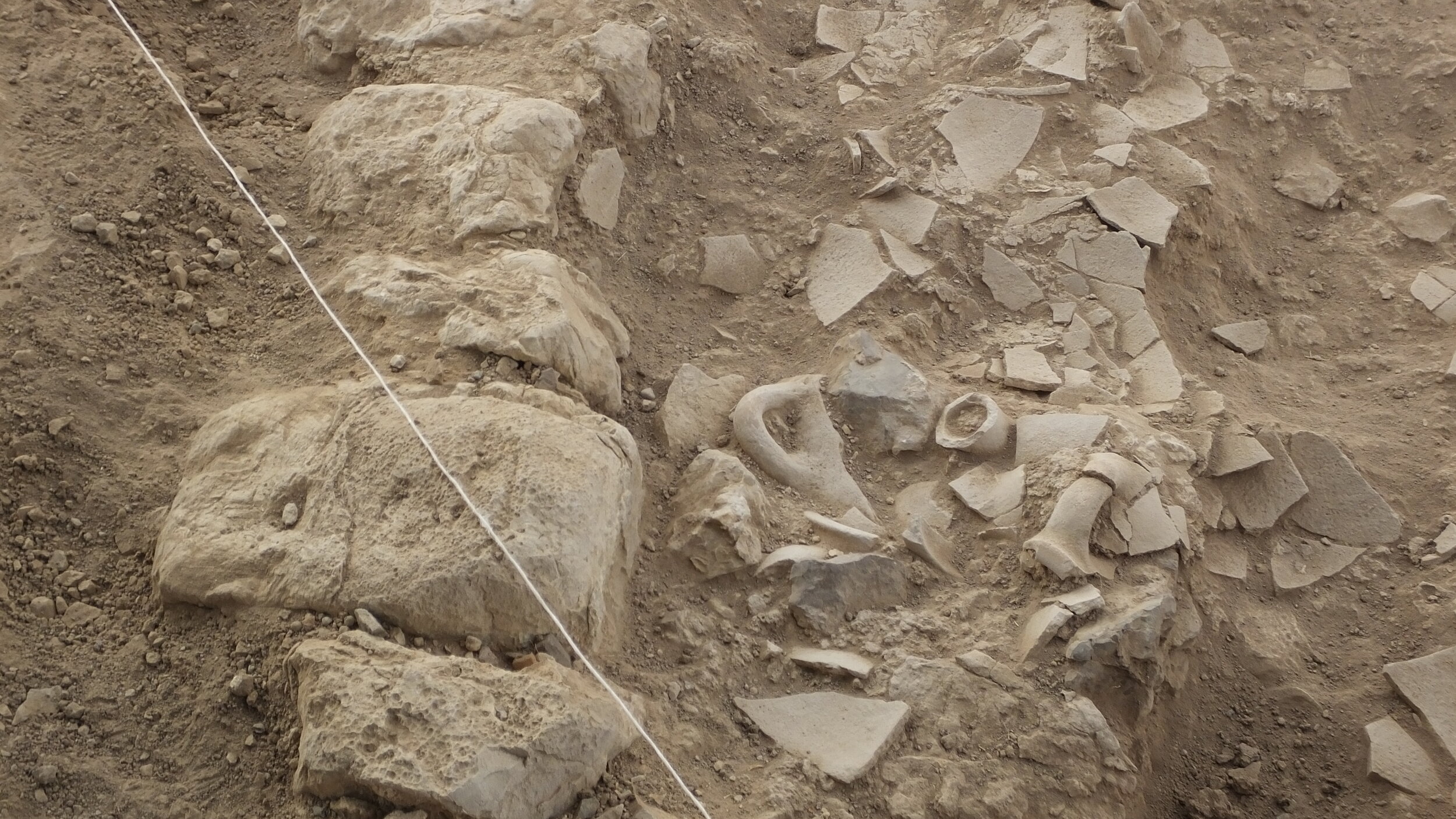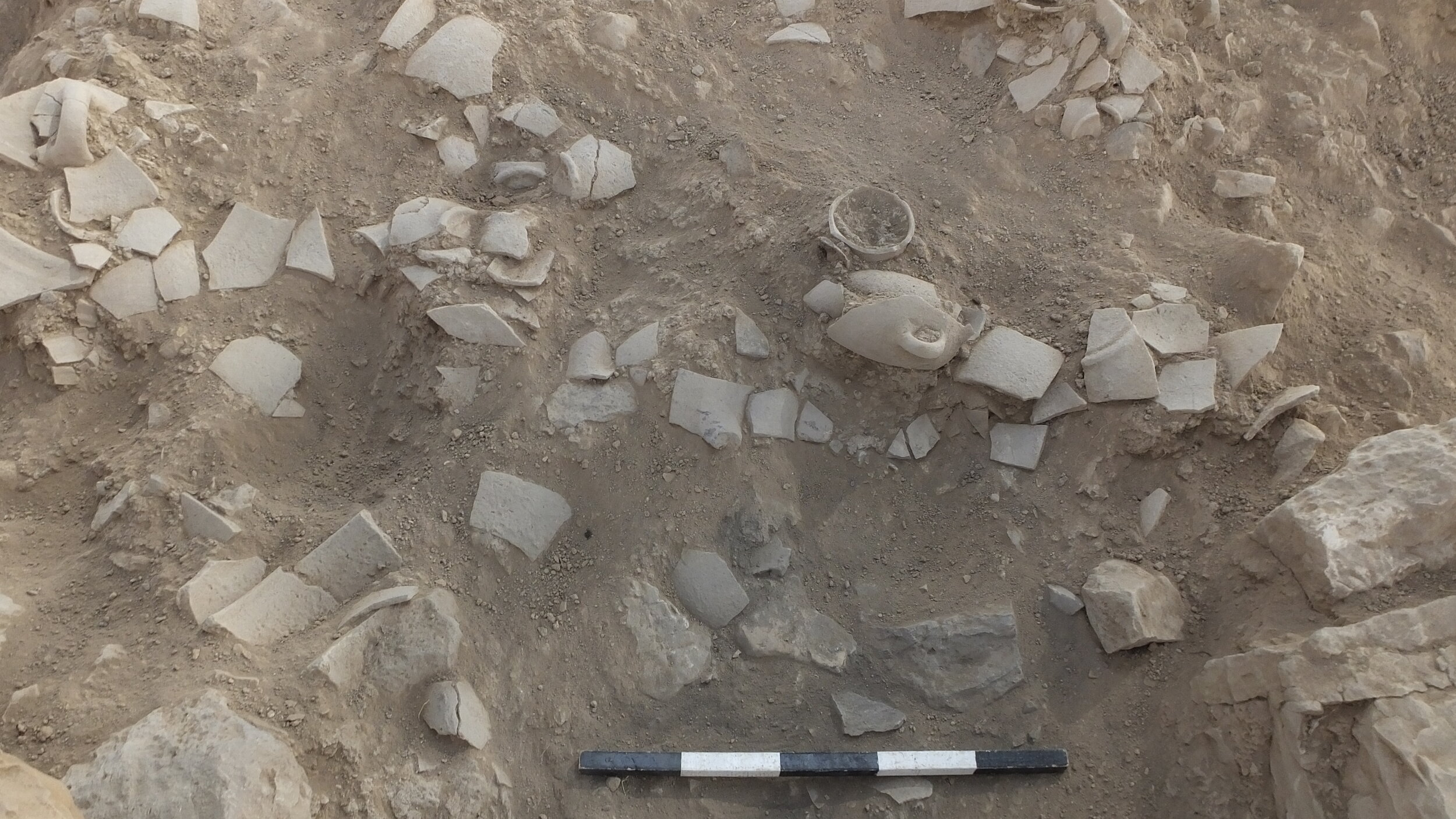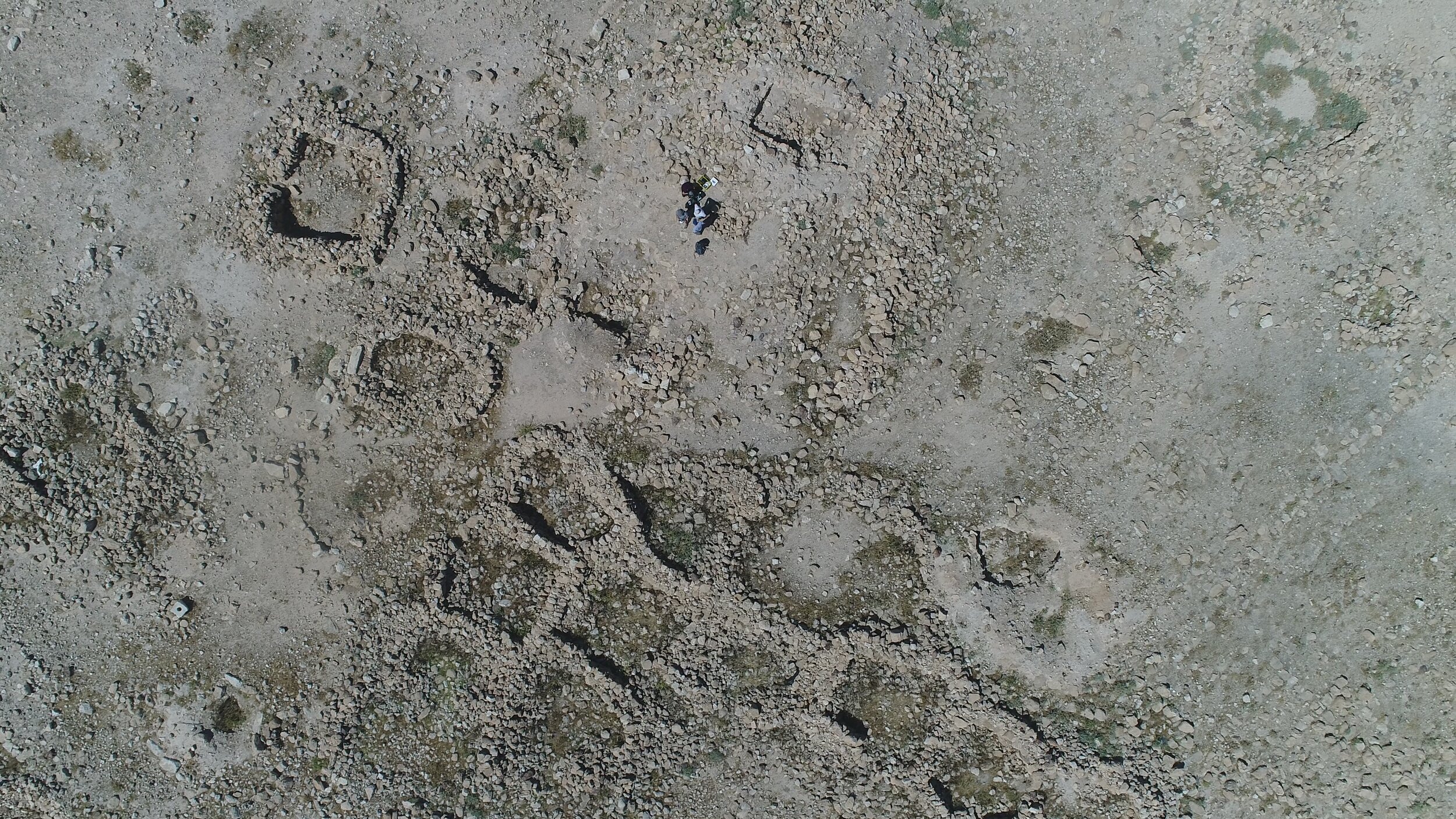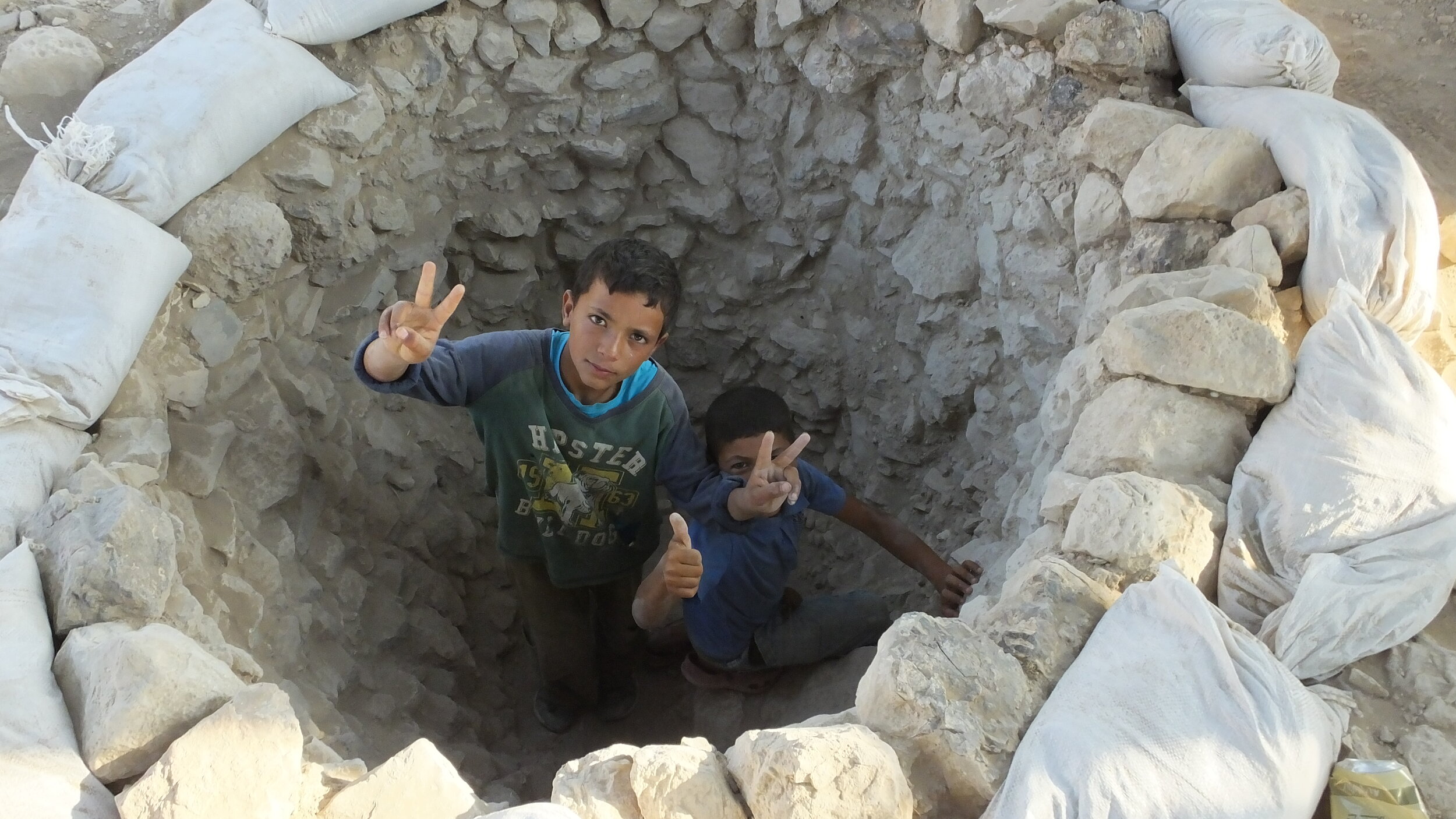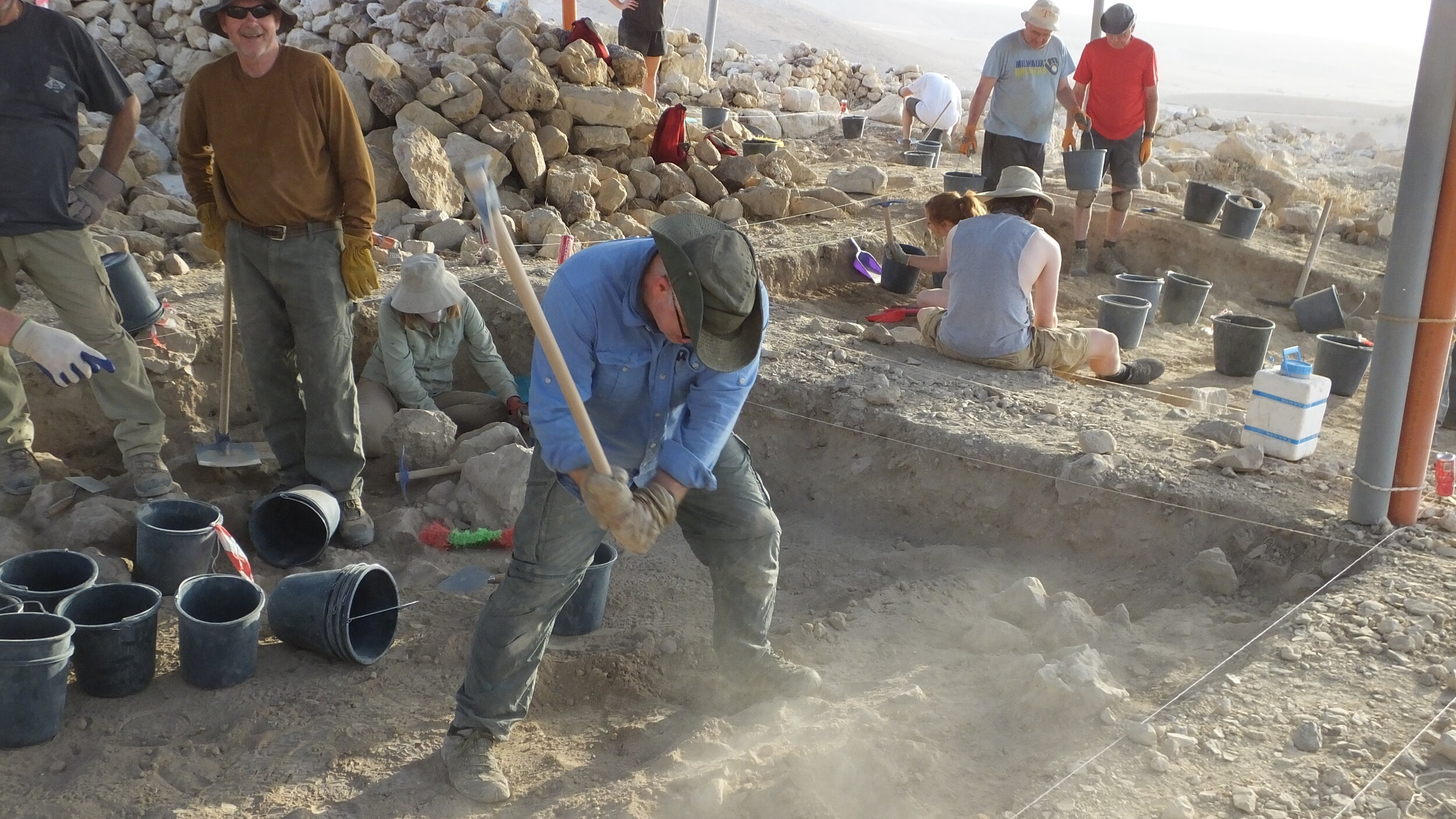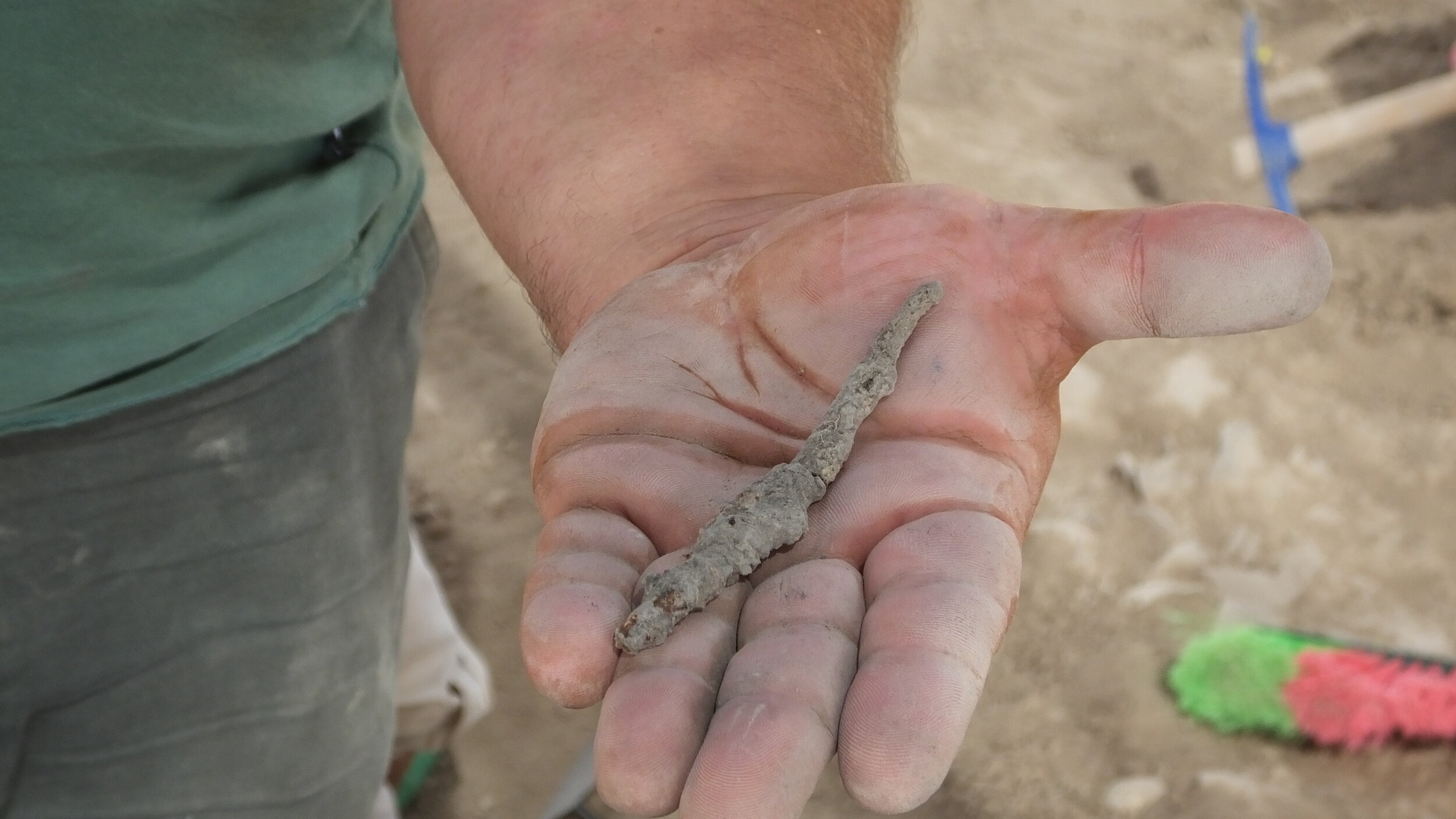Khirbet 'Auja el-Foqa
Khirbet ‘Auja el-Foqa
Khirbet ʿAuja el-Foqa is a well-preserved fortified city on a hill about two miles southwest of el-Mastarah. The British survey visited the site in 1874 and, once they reported that it was the ruin of a modern village, no one bothered to visit it again for nearly 130 years. The survey of Manasseh visited the site in 2003 and conducted a thorough survey, followed by a detailed report of their findings. The site has never been excavated, however.
ʿAuja el-Foqa is on a high hill isolated by steep slopes, rising about 100 meters above the valley below. We climbed the stony peak and found the settlement surrounded by a casemate wall with more than 20 casemate rooms in it. The remains of a tower are located at the center of the site, as well as numerous buildings across the site, including what may be the remains of a four-room house. The structures are very well-preserved, with walls standing up to 2 meters in height. In a number of locations on the site, we could see the remains of earlier structures underneath those on the surface. Ninety percent of the pottery collected dated to the Iron Age, and the survey concluded that the site was a fortified town during the Iron Age II (1000-586 BCE). However, the site may have been founded earlier, as earlier structures indicate.
Zertal identified ʿAuja el-Foqa with the site of Ataroth, mentioned in the description of the Manasseh-Ephraim boundary in Josh 16:7, on the basis its location as well as on the meaning of its name. The name Ataroth means “crown,” and the site certainly crowns the hilltop. However, we propose identifying ʿAuja el-Foqa as Na’arah, which is also mentioned in Josh 16:7. The site clearly served as a military and administrative center in the Jordan Valley, and it may yield important evidence about the administration of the kingdom of Israel in this region during the Iron II (1000-586 BCE).
In the summer of 2019 and the winter of 2020, the Jordan Valley Excavation Project (JVEP) conducted two seasons of excavation at this fascinating site, with a view to reconstructing its occupational history, uncovering its material culture, and solving the mystery of whether it may be linked to the Israelite settlement of the region in biblical times. These were very fruitful seasons. In the 2019 season, we were able to date the city walls to Iron II (1000-586 B.C.E.), the time of the Divided Monarchy. We also found an earlier wall that ran under the Iron II wall, which probably dates either to the late Iron I (1250-1000 B.C.E.) or to the earliest part of Iron II. We found several sling-stones, spear heads, grinding stones, and lots and lots of pottery. And, toward the end of the third week, we found a monolithic building (a building made of large stones) that probably served as some kind of administrative building (governor’s house, administration building, etc). The first season of excavation clearly established the importance of the site in the region during the period of the Divided Kingdom.
In the 2020 season, we moved to the northern part of the site, where we think the gate may have been located. In this area, we began excavating a house, the outlines of which were visible on the surface of the ground. We found a destruction layer in several of the rooms of this house, with complete pottery vessels, some fully intact. In subsequent seasons, our work has concentrated on this northern area, where we have also discovered a Middle Bronze Age tower. This discovery has raised many new questions about the history of the site.
On the whole, the site is rich with finds, especially pottery dated to the ninth and eighth centuries BCE. Most of the ceramic styles connected with these periods are generally more similar to the ones found in the northern Israelite kingdom, rather than Judah, which suggests that this may have been an Israelite site, at least during the late Iron Age II.
The main feature we have found so far is the well-built Iron Age casemate wall, which was built according to the same basic plan as the one at Khirbet Qeiyafa, a site on the Shephelah (Judean foothills) that has been interpreted by its excavator as a Judahite stronghold from the time of kings Saul and David and probably served as a western defense against Philistia. ʿAuja Foqa probably served a similar purpose on the eastern frontier as Khirbet Qeiyafa did for Israel’s western border: an administrative “capital” and military center of the southern Jordan Valley during the Iron Age II.
The need for further excavation is clear, both because of the site’s well-preserved remains from the Iron Age, as well as those from other periods, and its special location in the southern Jordan Valley, a region that has been largely unknown archaeologically, especially with regard to the monarchic period. In future seasons, we will continue to look for the gate and excavate more architecture inside the site, including some large structures that may have had administrative or storage purposes. Our excavations at Khirbet ʿAuja Foqa will be instrumental in shedding new light on the history of ancient Israel in the Jericho Valley during the period of the Divided Monarchy.
In 2024, we will return to ʿAuja Foqa for a four-week season. Join JVEP as a volunteer on this pioneering excavation and experience Israel like never before!

